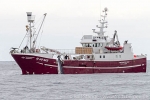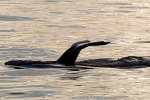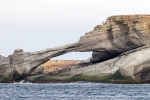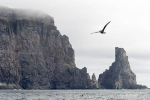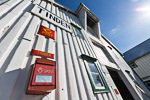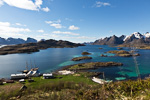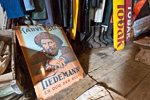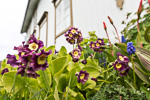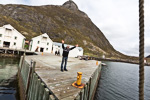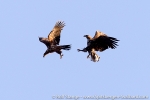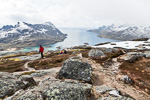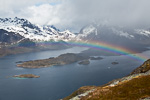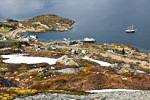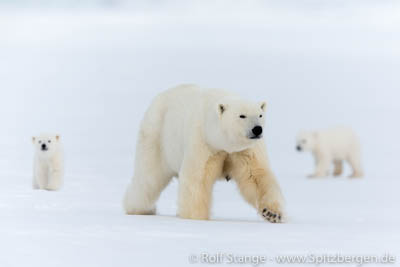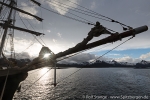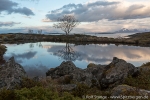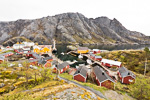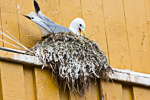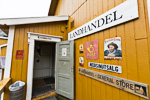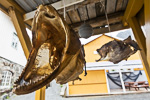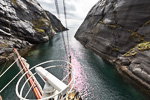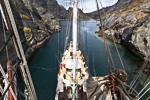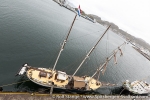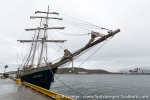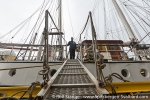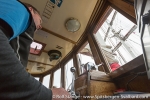-
current
recommendations- Liefdefjord
New page dedicated to one of Spitsbergen's most beautiful fjords. Background information and many photos.
- New Spitsbergen guidebook
The new edition of my Spitsbergen guidebook is out and available now!
- Liefdefjord
New page dedicated to one of Spitsbergen's most beautiful fjords. Background information and many photos.
Page Structure
-
Spitsbergen-News
- Select Month
- May 2025
- April 2025
- March 2025
- February 2025
- January 2025
- December 2024
- November 2024
- October 2024
- September 2024
- August 2024
- July 2024
- June 2024
- May 2024
- April 2024
- March 2024
- February 2024
- January 2024
- December 2023
- November 2023
- October 2023
- September 2023
- August 2023
- July 2023
- June 2023
- May 2023
- April 2023
- March 2023
- February 2023
- January 2023
- December 2022
- November 2022
- October 2022
- September 2022
- August 2022
- July 2022
- June 2022
- May 2022
- April 2022
- March 2022
- February 2022
- January 2022
- December 2021
- November 2021
- October 2021
- September 2021
- August 2021
- July 2021
- June 2021
- May 2021
- April 2021
- March 2021
- February 2021
- January 2021
- December 2020
- November 2020
- October 2020
- September 2020
- August 2020
- July 2020
- June 2020
- May 2020
- April 2020
- March 2020
- February 2020
- January 2020
- December 2019
- November 2019
- October 2019
- September 2019
- August 2019
- July 2019
- June 2019
- May 2019
- April 2019
- March 2019
- February 2019
- January 2019
- December 2018
- November 2018
- October 2018
- September 2018
- August 2018
- July 2018
- June 2018
- May 2018
- April 2018
- March 2018
- February 2018
- January 2018
- December 2017
- November 2017
- October 2017
- September 2017
- August 2017
- July 2017
- June 2017
- May 2017
- April 2017
- March 2017
- February 2017
- January 2017
- December 2016
- November 2016
- October 2016
- September 2016
- August 2016
- July 2016
- June 2016
- May 2016
- April 2016
- March 2016
- February 2016
- January 2016
- December 2015
- November 2015
- October 2015
- September 2015
- August 2015
- July 2015
- June 2015
- May 2015
- April 2015
- March 2015
- February 2015
- January 2015
- December 2014
- November 2014
- October 2014
- September 2014
- August 2014
- July 2014
- June 2014
- May 2014
- April 2014
- March 2014
- February 2014
- January 2014
- December 2013
- November 2013
- October 2013
- September 2013
- August 2013
- July 2013
- June 2013
- May 2013
- April 2013
- March 2013
- February 2013
- January 2013
- December 2012
- November 2012
- October 2012
- September 2012
- August 2012
- July 2012
- June 2012
- May 2012
- April 2012
- March 2012
- February 2012
- January 2012
- December 2011
- November 2011
- October 2011
- September 2011
- August 2011
- May 2011
- April 2011
- March 2011
- February 2011
- January 2011
- December 2010
- November 2010
- September 2010
- August 2010
- July 2010
- June 2010
- May 2010
- April 2010
- March 2010
- February 2010
- November 2009
- October 2009
- August 2009
- July 2009
- June 2009
- May 2009
- April 2009
- March 2009
- February 2009
- January 2009
- December 2008
- November 2008
- October 2008
- August 2008
- July 2008
- June 2008
- May 2008
- April 2008
- March 2008
- February 2008
- April 2000
- Select Month
-
weather information
-
Newsletter

| Guidebook: Spitsbergen-Svalbard |
Home → May, 2015
Monthly Archives: May 2015 − News & Stories
Ice
Sun
31 May
2015
It is late in the evening, the sun is shining on coast and mountains south of Bellsund – not a good time to spend ages with the computer, writing a lot of text. I rather spend the time watching the scenery and looking for a potential polar bear somewhere on shore.
A lot of ice blocking Hornsund today, unexpectedly – but beautiful. And hundreds – no: thousands! – of Harp seals ☺ an early season specialty.
- gallery anchor link: #gallery_675
Click on thumbnail to open an enlarged version of the specific photo.
Whaling
Sat
30 May
2015
The further we came north, the better the weather. The stiff breeze eased out until the water surface became oily, just moved by the gentle swell, shining in the evening sun. Best conditions to find some whales!
We were not the only ones in the area looking for whales, but little did we know that the intentions of the other boat that came into sight were far less peaceful. The seemingly innocent boat Reinebruen from Svolvær (Lofoten, Norway) turned out to be a whale catcher, with a crow’s nest and a harpoon gun on the bow, and while we were watching a young Humpback whale, we heard the first shot being fired in the distance. Several more shots followed over the next couple of minutes, and we saw a smaller whale splashing under the bow of the whaler. It fought the pain of the steel harpoon in its belly for 5-6 minutes until it died.
It is not a secret that Norway issues well beyond 1000 licenses for Minke whales to its whaling fleet every year, and sometimes we see whaling ships in Norwegian ports including Longyearbyen. But seeing a whaler in deadly action is something different. I had never seen that before and I did not have an idea of the impression it would make on me to see how a whale is shot, dies and is pulled up on deck.
The crew of the Reinebuen turned the ship several times quickly, obviously trying to move the strongly bleeding whale out of our sight. They know what the world things about this.
Finally they went their way and we went ours. I had a bad feeling in my stomach and weak knees, as if I had just become witness to a murder. Well, this was pretty much the case, in a wider sense.
- gallery anchor link: #gallery_674
Click on thumbnail to open an enlarged version of the specific photo.
Soon, two more Humpback whales appeared under the midnight sun, happy and alive, not knowing that a slightly remoter relative had just died in a very bloody and painful way. Spirits on board were rising noticeably. Admittedly, I was not yet up for it. The emotional change from slaughter to observation of almost the same wonderful animal was just a bit too fast for me, so I watched it slightly mechanically, took my photos and was then happy to finish the day.
Bear Island
Sat
30 May
2015
29th/30th May 2015 – There is nothing much to say about the crossing. Wind and waves made it an experience of limited pleasure, and presence during meals was visibly reduced. Well, it was not dramatic, but not really popular either. No sightings of whales, only small groups of dolphins every now and then. The better that we made good speed, so we reached Bear Island already mid-day of the 29th. We kept on the southeastern side, as this side offered the best shelter available from wind and waves, and soon we had found a suitable landing site.
From the distance, Bear Island may seem a grey, empty rock in the ocean, but a closer look reveals all the treasures of nature you can imagine of a remote, small island in the Arctic. An impressive coastal landscape with bird cliffs, various geomorphological phenomena including frost-patterned ground and karst springs and so on. The feeling of remoteness and exposure is amongst the best parts of the Bear Island experience, especially in quiet moments when all you hear is the wind. We spend a rather long afternoon on the island, roaming around from the river mouth in Ærfuglvika to the seabird colony at Kapp Ruth, passing some small, mostly still frozen lakes in flat tundra towards the river Jordbruelva, which we followed between steep snow-covered river banks, until we returned to Kapp Maria with its impressive rock cave Kvalkjeften (whale jaw) and a huge hole in the rocky ground, through which you see the surf 15 m lower down.
A calm night at anchor in the shelter of the island was certainly amongst the highlights of the day for many.
- gallery anchor link: #gallery_672
Click on thumbnail to open an enlarged version of the specific photo.
Next morning, we cruised around the southern end of Bear Island, where nature has created some of the most impressive cliffs in the north Atlantic. The seas and winds being too high for any Zodiac operations, we enjoyed the views from the ship, in the presence of countless Northern fulmars, before we continued northwards, course for Spitsbergen.
May 17th: Norwegian Constitution Day is also celebrated in the Arctic
May 17th is the National Day of Norway. On this day Norwegians celebrate the Norwegian Constitution which was adopted on May 17th in 1814 by the recently established Constituent Assembly at the small place of Eidsvoll in southern Norway. A considerable act for the country and courageous as well, as Norway before was governed by the Danish crown for almost 300 years. Officially Norway was part of the Danish kingdom, the important positions were held by Danes and by the impact of culture- and school-politics Norwegians should become Danish.
In 1814, at the end of the Napoleonic Wars, as the territorial reorganization of the Scandinavian countries was negotiated in the Treaty of Kiel, the Norwegians took the opportunity: They established a national assembly, gave themselves a constitution and elected an own king. Yet, it did not work that easy. Norway was pressed into a union with Sweden instead and the Swedish king also became king of Norway in personal union. But at least Norway was a separate kingdom again, the national assembly was transformed into a parliament (Storting) and the constitution, celebrated on May 17th, was maintained. Norway became completely independent in 1905 when the union with Sweden was suspended.
Traditionally the National Day is celebrated with a parade including music, lots of Norwegian flags and a diversity of traditional costumes from the different parts of the country. In the capital Oslo the parade moves along Karl Johans Gate and passes the Royal Palace. All over the country people raise the Norwegian flag.
In the Norwegian Arctic May 17th was celebrated as well, not only on Spitsbergen, in Longyearbyen, among the researchers in Ny Ålesund and in the mining settlement of Sveagruva, but also at the meteorological stations on the remote islands of Bjørnøya, Jan Mayen and Hopen. Even the crew of the research vessel RV ´Lance´, frozen in the ice north of Spitsbergen, organized a parade: across the ice, once around the ship. Afterwards there was a party onboard. The station on Bjørnøya was visited by the crew of the coastguard vessel KV ´Harstad´, increasing the number of participants at the parade significantly. It is also said, that they could win some new members for the Bjørnøya Nude-Bathing-Association. The smallest May 17th celebration was held on Hopen. At least with 4 persons (and the 4 station dogs) all inhabitants were present.
The parade in Longyearbyen stops at the war memorial.
Photo: © RS
In Longyearbyen the parade moved from the church to the city center and further to the war memorial where flowers were laid down and speeches were held. The speakers were Robert Hermansen, former CEO of the mining company Store Norske Spitsbergen Kulkompani and the Russian Consul General in Barentsburg, Jurij Gribkov, who congratulated the Norwegians to the celebration of their Constitution. Afterwards the parade moved to the Svalbardhall where a meal was served and the celebration continued with several events, especially for the children. In his speech the Sysselmannen Odd Olsen Ingerø emphasized Norway´s sovereignty over Svalbard and confirmed the validity of the Spitsbergen Treaty.
Source: Svalbardposten
Tromsø
Tue
26 May
2015
Tromsø, Paris of the north, traditional gateway to the Arctic and our stepping stone towards Bear Island and Spitsbergen, presents itself in the best of weather. Visits to the museums dedicated to the Arctic, excursions to the viewpoint on Fløya and some time to relax in zivilisation, before we continue towards the Barents Sea.

Tinden
Mon
25 May
2015
Two years ago, we „discovered“ Tinden, an old trading post on the outer coast of the Vesterålen islands, beautifully situated in a bay under a steep mountain, hidden behind some small islands. We did not have any idea back then what to expect, we had just been told that it should be a nice place. Which was quite an understatement. The old trading post was abandoned long time ago, but has been beautifully revived as a museum, in a similar way as Port Lockroy in Antarctica. Tinden is a small, but lovely ensemble of white wooden houses, shelves squeezed with early 20th century items, there is even a flower garden with old species which they had to re-gather on churchyards. The manager of the place, Kjell, is a great character and a very valuable part of the experience.
So this is what we could enjoy today, and to make things even better, the sun was shining on the whole setting, so a little walk up the steep slope behind the buildings was definitely a good thing to do.
- gallery anchor link: #gallery_670
Click on thumbnail to open an enlarged version of the specific photo.
Hard to imagine that there had been a storm here some months ago, strong enough to destroy several houses here that had survived countless storms during many decades. An irreplacable loss, as nobody can tax or even replace all the historical artefacts lost. And I don’t really want to know how strong the winds were that flattened those sturdy buildings. How nice is today’s light breeze.
By the way, some 360 degree impressions from Tinden are already available. I should make an updated version now, as I got a sunny addendum today.
Raftsund & Vesterålen
Sun
24 May
2015
We watch the southern Vesterålen islands passing by while we are making miles to the north. Scenic coastlines and mountains, sea eagles and even orcas make the afternoon a very pleasant and interesting experience.
- gallery anchor link: #gallery_668
Click on thumbnail to open an enlarged version of the specific photo.
Digermulen
Sun
24 May
2015
We are certainly not the first tourists in this area. The German emperor Wilhelm II. was here in 1889. If he had only spent more time traveling and less with politics, it might have saved the world a lot of trouble, who knows.
Despite all the troubles that he had with his job – his own fault! – he managed to travel to Norway quite a lot. And twice he made it to Digermulen, a little village – about 300 inhabitants – at the southern end of Raftsund. That is the strait that separates Austvågøya (Lofoten) from Hinnøya (Vesterålen). There is a mountain next to Digermulen that is called Digerkollen. It is not so terribly diger (big), actually not at all with an altitude of 384 m, that is something we can do. And nobody has to carry up plates of granite with our names incarved after us. We are more than happy with our signatures in the Gipfelbuch (what is that in English?).
- gallery anchor link: #gallery_666
Click on thumbnail to open an enlarged version of the specific photo.
The way up, across stones, mud and snow, takes about 1 ½ hours, with an interesting mixture of rain, sun, snow and sun again. Luckily, it remains sunny as we reach the top, so we can enjoy splendid views of Raftsund, Hinnøya, Austvågøya and and a number of smaller islands. An imperial view, indeed!
Winter season coming to an end; polar bear families in Billefjord
Inspite of thawing periods in April, the winter season has lasted for quite a long time. Now it is coming to an end. In late April, the weather had finally stabilized with temperatures below zero and many sunny days, bringing good touring weather beyond 17 May, the Norwegian national day.
The spring has brought new inhabitants to inner Isfjord: two polar bear families have been regularly seen in Billefjord and Tempelfjord, including one with 3 cubs, a great rarity. This very pleasant fact brought controversial discussions regarding snow mobile traffic in these frequently visited fjords. The Sysselmannen (local authorities) asked the public several times to execute good self control and keep traffic to an unavoidable minimum. Nevertheless, small groups were observed several times too close or too long near the bears.
Experience for example from Tempelfjord in 2013 shows that polar bears, including families with young offspring, do not necessarily suffer from frequent traffic. In that spring, a mother with 2 first year cubs spent several months in Tempelfjord, which was frequently visited by large numbers of groups. Respectful behaviour contributed to the well-being of the bear family, which was generally not visibly affected by traffic, but seemed to enjoy a good and healthy period, with regular hunting success.
Unfortunately, both cubs from 2013 are most likely dead by now. One died in Billefjord a short time after tranquilization for scientific reasons. There is now evidence for the tranquilization being the cause of the death, but the assumption is not far away.
The second one of those 2 cubs was most likely the one that was shot near Fredheim in late March 2015 by tourists in their camp. The bear had injured one person in a tent and was then injured with several bullets from a revolver. It was later shot by the police.
These observations indicate that a larger number of well-controlled tourists, with respectful behaviour, is less of a problem than a smaller number of visitors (including scientists) with more unusual activities, involving a higher risk. An interesting impression, as the public reception of tourists is generally much worse than that of scientists.
Currently, the greatest public concern is about the polar bear family with 3 cubs. Discussions in social networks make it clear that there is public concern and interest, at least locally, and there is little tolerance for behaviour that might disturb or even endanger the bears. On the other hand, the mother has already been marked by scientists, which involves tranquilization of at least the mother. It is not known in public wether the scientists used snow mobiles or helicopters to get within shooting range, but in any way this can safely be assumed to be a traumatic experience for the whole family, within a period that is believed to be so sensitive for the survival of the young bears that the Sysselmannen asks the public to minimize traffic in the same area.
Now, the snow mobile season is over anyway, which will make life for the polar bears a bit more quiet, as individual do not have the opportunity anymore to get too close to the bears.
Polar bear family in Billefjord, April 2015
Heimøya
Sat
23 May
2015
It is part of the fun to discover new places. If you haven’t been to a place, then it may be a good reason to go there one day. After an interesting afternoon – sometimes the wind needs about a minute up here to turn 180 degrees, which is interesting for a ship under sail – we came to Heimøya. A little island, separated from its little neighbouring island by a little channel. The Norwegians have obviously discovered Heimøya as a good place to build weekend houses, so there is quite a few of them there. Is that the reason for the name, or was it the other way around?
- gallery anchor link: #gallery_663
Click on thumbnail to open an enlarged version of the specific photo.
We still have a real sunset and, accordingly, a real evening with real evening light.
Nusfjord
Sat
23 May
2015
Nusfjord is the first port of call for us, so the rest of the night is calm, apart from the slightly disharmonic music of singing fenders. A very pleasant surprise for most on board to wake up on these lovely surroundings. Nusfjord is kind of a museum village, a time capsule that moves the visitor back to the early 20th century, as you are walking into the old „Landhandel“ or around the little natural harbour with its traditional rorbuer, simple wooden buildings where fishery workers were accommodated periodically in the old days. Kittiwakey are making the same noise today as they did 100 years ago. And the rain showers make you as wet as they did 100 years ago, Gore Tex or not.
- gallery anchor link: #gallery_662
Click on thumbnail to open an enlarged version of the specific photo.
As a final highlight, Captain Joachim is navigating Antigua around the little island of Brattholmen, through a scenic natural channel. A miniature version of Trollfjord, kind of a warm-up exercise. Perfectly enjoyed from the best place, up on the mast ☺
Bodø
Fri
22 May
2015
Yeeha – today I am starting my northern sailing season! The 3 mast barkentine Antigua is waiting in the harbour of Bodø in north Norway. She has taken 2 weeks to sail up here from Hamburg. I am covering the same distance a bit higher and faster.
A day later, the international group comes on board. Some language mathematics: German + Dutch = English.
- gallery anchor link: #gallery_660
Click on thumbnail to open an enlarged version of the specific photo.
A gentle southwesterly breeze is blowing, while we are leaving the harbour of Bodø, steaming into Vestfjord. 50 nautical miles of open water between here and Reine on Moskenesøya, one of the southern Lofoten islands. Soon, the sails are up. The sea is moderate, but enough for some on the first evening. Others enjoy sailing into the evening sun, while the famous Lofoten wall („Lofotveggen“) is slowly appearing out of a cloud.
Russia protests against Norwegian oil development in the Barents Sea
Russia is using every opportunity to challenge the Norwegian government in the Arctic. Already in early March, the Russian ambassador has filed a sharp diplomatic note to the Norwegian ministry of foreign affairs to protest against the opening of blocks for oil and gas in the Barents Sea.
According to the Russians, the area in question should be governed by the Spitsbergen Treaty, which would give other countries more rights to make use of potential resources. The further development would, at least, not be a domestic Norwegian issue anymore.
The Russian reasoning, however, leaves a mixed impression at best: it is argued that Spitsbergen has a shelf area on its own, to which the relevant area belongs. Hence, the area should be treated as part of Spitsbergen, according to the Russian government, and not as part of the Norwegian economic zone.
It is commonly accepted, as is illustrated in the image in this article, that there is one continuous shelf from mainland Norway up to Spitsbergen, and this shelf belongs to Norway. This is certainly the perspective of the Norwegian government, which is certainly shared by the Russian government when it comes to their own shelf areas north of Russia. There is no geological or juridical reason to define a separate “Spitsbergen Shelf”.
The continental shelf in the Barents Sea (light blue) is commonly considered one continuous shelf. The arrow marks the position of Bear Island (Bjørnøya).
Source: Alaska Dispatch News: Russia protests oil development in Svalbard zone
Store Norske bailout
The Norwegian coal mining company in Spitsbergen, Store Norske Spitsbergen Kulkompani (SNSK), has been in difficulties for a while (see December news: Coal mining not profitable: Store Norske cuts 100 jobs). The low world market prices for coal are the main reason. The SNSK has already cut a large number of jobs, which is reason for nervousness in a place as small as Longyearbyen, which may suffer strongly from a significant loss of jobs, both economically and socially.
Hence, a decision by the Norwegian government comes as a relief for many in Longyearbyen: As minister of economic affairs Monica Mæland announced during a press conference, SNSK will get a credit of 500 million Norwegian kroner (about 60 million Euro). The company had asked for 450 million NOK, less than it will actually get now.
Mæland made it clear that the credit does not come without some conditions: it is not to be taken as a guarantee for the long-term existence of coal mining in Spitsbergen. Future government politics in Svalbard, which set the framework for the development, are to be defined in a government policy statement (“Svalbardmelding”), which comes every 5-10 years. The next Svalbardmelding is currently under preparation in the ministry of justice. The current credit still needs approval from the Storting (Norwegian parliament). And the land property of the SNSK, which is an important local land owner, is to be transferred to the government. This shall strengthen Norwegian sovereignty and is likely to be more of a symbolic character, rather than having major practical consequences.
The credit for SNSK has led to common relief in Longyearbyen.
Coal mining in Spitsbergen: an industry with future or only with a lot of history?
Source: NRK
News-Listing live generated at 2025/May/02 at 23:57:22 Uhr (GMT+1)


